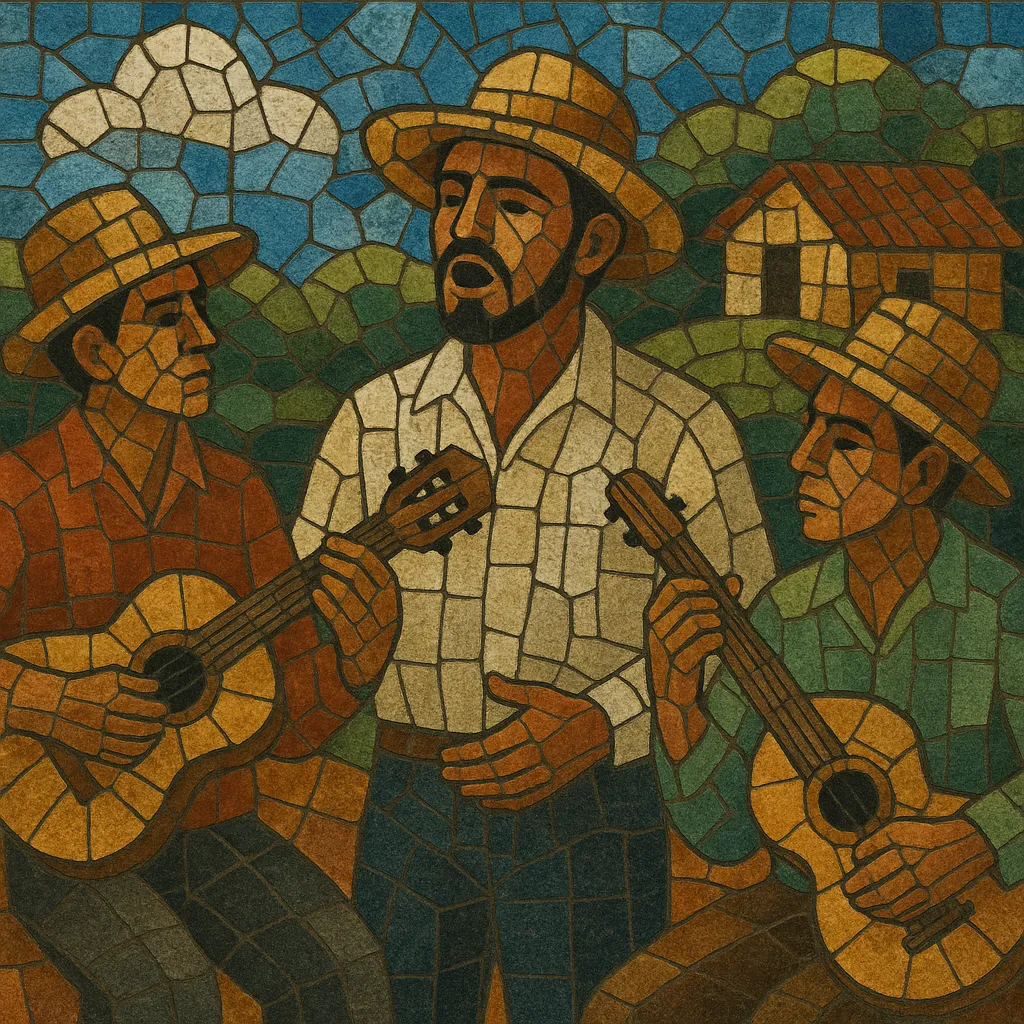Punto (often called punto cubano or punto guajiro) is a rural Cuban song tradition centered on improvised poetry sung to string accompaniment.
It features the décima espinela poetic form, where singers (repentistas) craft ten-line stanzas in real time, often in friendly duels called controversias.
Musically, it blends Iberian song practices with Cuban campesino aesthetics: bright strummed strings (notably the laúd cubano, guitar, and tres), steady danceable grooves, and a vocal delivery that can be both declamatory and lyrical.
Variants such as punto fijo and punto libre describe how tightly the accompaniment locks to a pulse, and regional styles (e.g., vueltabajero, camagüeyano) reflect local performance nuances.
The result is a living folk-poetic practice that is convivial, witty, and deeply tied to rural social life.
Punto emerged in colonial Cuba in the 18th century as Spanish settlers—especially from Andalusia and the Canary Islands—brought sung-poetry traditions to the countryside. The décima espinela (codified by Vicente Espinel in early modern Spain) became the signature poetic vehicle, while local performance contexts (rural festivities, markets, and family gatherings) shaped the social role of the music.
By the late 19th century, punto had distinct regional flavors and accompaniment patterns. The laúd cubano, guitar, and later the tres anchored harmonies in major keys with straightforward progressions, while rhythmic feels alternated between duple and compound meters with characteristic Iberian-Cuban hemiolas. Public repentista duels (controversias) popularized improvisation as a prized art.
Radio and records extended punto beyond local fiestas. Repentistas such as Justo Vega, Adolfo Alfonso, and Chanito Isidrón became household names, and poets like El Indio Naborí further legitimized the décima as literature. Artists including Celina González and Reutilio Domínguez brought punto’s rural voice to national stages, often intersecting with guajira and other Cuban genres.
Punto remains a living oral tradition taught informally and in cultural institutions, with festivals celebrating improvisation and décima composition. In 2017, UNESCO inscribed "Punto cubano" on the Representative List of the Intangible Cultural Heritage of Humanity, acknowledging its communal, poetic, and musical significance.


